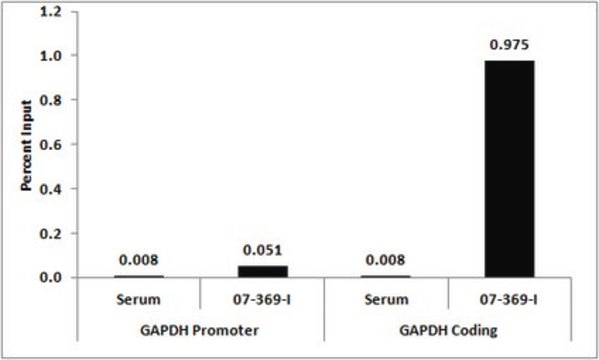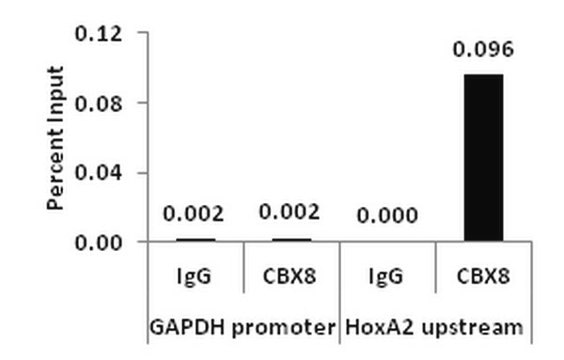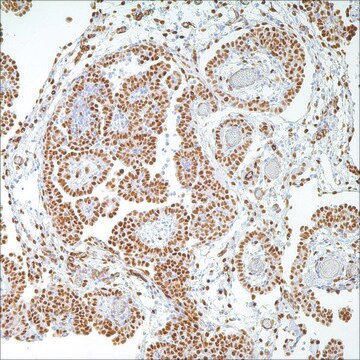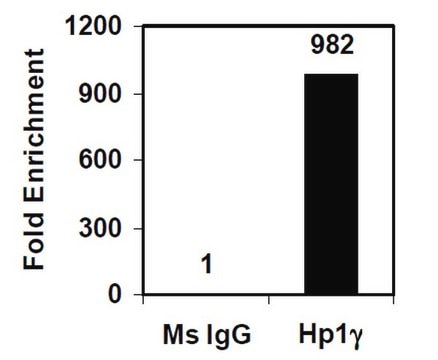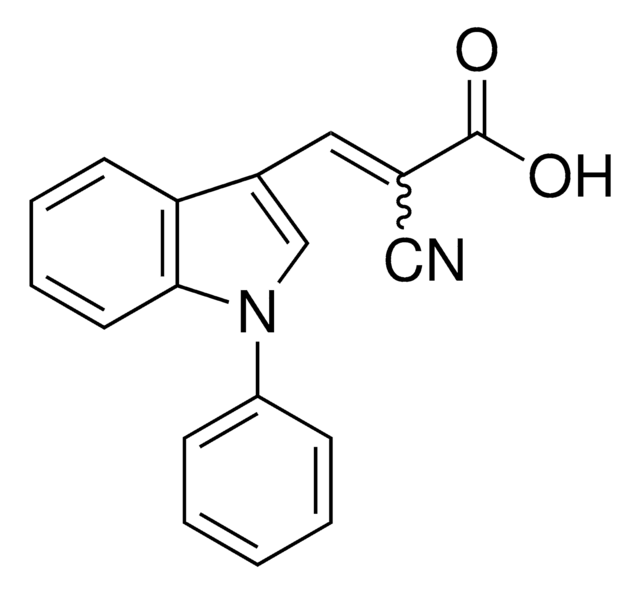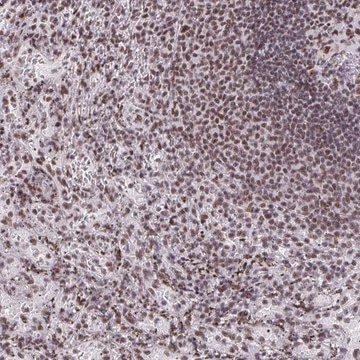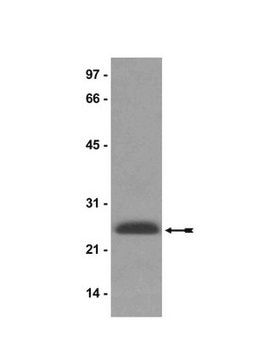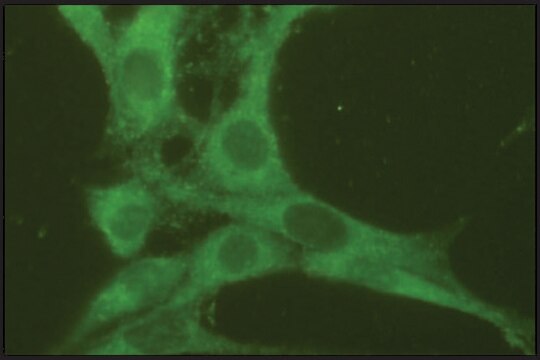17-10136
ChIPAb+ Dimethyl-Histone H3 (Lys36) - ChIP Validated Antibody and Primer Set
serum, from rabbit
Synonym(s):
H3K36me2, Histone H3 (dimethyl K36), H3 histone family, member T, Histone 3, H3, Histone cluster 3, H3
Sign Into View Organizational & Contract Pricing
All Photos(5)
About This Item
UNSPSC Code:
12352203
eCl@ss:
32160702
NACRES:
NA.32
Recommended Products
biological source
rabbit
Quality Level
antibody form
serum
clone
polyclonal
species reactivity
vertebrates, human
manufacturer/tradename
ChIPAb+
Upstate®
technique(s)
ChIP: suitable
electrophoretic mobility shift assay: suitable
immunoprecipitation (IP): suitable
western blot: suitable
NCBI accession no.
UniProt accession no.
shipped in
dry ice
General description
All ChIPAb+ antibodies are individually validated for chromatin precipitation, every lot, every time. Each ChIPAb+ antibody set includes control primers (tested every lot by qPCR) to biologically validate your IP results in a locus-specific context. The qPCR protocol and primer sequences are provided, allowing researchers to validate ChIP protocols when using our antibody in their chromatin context. Each set also includes a negative control antibody to ensure specificity of the ChIP reaction.
The ChIPAb+ Dimethyl Histone H3 (Lys36) set includes a Dimethyl Histone H3 (Lys36) antibody, a Normal Rabbit Serum, and positive control primers which amplify a 87 bp region of the human GAPDH coding region. The Dimethyl Histone H3 (Lys36) antibody and negative controls are supplied in a scalable "per ChIP" reaction size and can be used to functionally validate the precipitation of dimethyl Histone H3 (Lys36) associated chromatin.
The ChIPAb+ Dimethyl Histone H3 (Lys36) set includes a Dimethyl Histone H3 (Lys36) antibody, a Normal Rabbit Serum, and positive control primers which amplify a 87 bp region of the human GAPDH coding region. The Dimethyl Histone H3 (Lys36) antibody and negative controls are supplied in a scalable "per ChIP" reaction size and can be used to functionally validate the precipitation of dimethyl Histone H3 (Lys36) associated chromatin.
Histones are highly conserved proteins that serve as the structural scaffold for the organization of nuclear DNA into chromatin. The four core histones, H2A, H2B, H3, and H4, assemble into an octamer (2 molecules of each). Subsequently, 146 base pairs of DNA are wrapped around the octamer, forming a nucleosome, the basic subunit of chromatin. Histones are modified post-translationally by the actions of enzymes in both the nucleus and cytoplasm. These modifications regulate DNA transcription, repair, recombination, and replication. The most commonly studied modifications are acetylation, phosphorylation, methylation, and ubiquitination. These modifications can alter local chromatin architecture, or recruit trans-acting factors that recognize specific histone modifications (the "histone code" hypothesis). The modifications occur predominantly on the N-terminal and C-terminal tails that extend beyond the nucleosome core particle. Methylation of histone H3 on Lys36 (H3K36me2/3) is tightly associated with actively transcribed genes, and this modification is found primarily within the coding region, suggesting H3K36 methylation is necessary for efficient RNA polymerase II elongation and processivity.
Specificity
Recognizes Dimethyl Histone H3 (Lys36). No detectable cross-reactivity unmethylated, mono, or dimethylated Lys36. No detectable cross reactivity to other histone modifications as measured by AbSurance Histone Antibody Specificity Arrays.
Wide reactivity with other species is expected.
Immunogen
Epitope: Dimethylated Lys36
KLH-conjugated linear peptide corresponding to a region near the N-terminus of human Histone H3 dimethylated at Lys36.
Application
Chromatin Immunoprecipitation:
Sonicated chromatin prepared from HeLa cells (1e5 cell equivalents per IP) were subjected to chromatin immunoprecipitation using 1 µL of either Normal Rabbit Serum (Part No. CS200585), or 1 µL Anti-Dimethyl Histone H3 (Lys36) (Part No.CS207357) and the Magna ChIP HiSens (Cat. # 17-10460). Successful immunoprecipitation of dimethyl Histone H3 (Lys36) associated DNA fragments was verified by qPCR using ChIP Primers, GAPDH coding D2 (Part No. CS207323) as a positive locus, and GAPDH promoter (Part No. 22-004) as a negative locus. (Figure 2). Data are presented as percent input of each IP sample relative to input chromatin for each amplicon and ChIP sample as indicated.
Please refer to the Magna ChIP HiSens (Cat. # 17-10460) or EZ-MagnaChIP HiSens(Cat. # 17-10461) protocol for experimental details.
Chromatin Immunoprecipitation:
Sonicated chromatin prepared from HeLa cells (1e5 cell equivalents per IP) were subjected to chromatin immunoprecipitation using 1 µL of either Normal Rabbit Serum (Part No. CS200585), or 1 µL Anti-Dimethyl Histone H3 (Lys36) (Part No.CS207357) and the Magna ChIP HiSens (Cat. # 17-10460). Successful immunoprecipitation of dimethyl Histone H3 (Lys36) associated DNA fragments was verified by qPCR using ChIP Primers, GAPDH coding D2 (Part No. CS207323) as a positive locus, and GAPDH promoter (Part No. 22-004) as a negative locus. Please refer to the Magna ChIP HiSens (Cat. # 17-10460) or EZ-MagnaChIP HiSens(Cat. # 17-10461) protocol for experimental details.
Western Blotting Analysis:
A 1:10,000 dilution of this antibody detected dimethyl Histone H3 (Lys36) in 10 µg HeLa acid extract and demonstrated a loss of signal in 0.5 µg of unmethylated recombinant Histone H3
Dot Blot Analysis: Representative lot data.
Absurance Histone H3 Antibody Specificity Array (Cat. No. 16-667, Fig. A) Absurance Histone H2A, H2B, and H4 Antibody Specificity Array (Cat. No. 16-665, Fig. B) were probed with Anti-Dimethyl Histone H3 (Lys36) (1:10,000 dilution). Proteins were visualized using a Donkey Anti-Rabbit IgG secondary antibody conjugated to HRP and a chemiluminescence detection system.
Sonicated chromatin prepared from HeLa cells (1e5 cell equivalents per IP) were subjected to chromatin immunoprecipitation using 1 µL of either Normal Rabbit Serum (Part No. CS200585), or 1 µL Anti-Dimethyl Histone H3 (Lys36) (Part No.CS207357) and the Magna ChIP HiSens (Cat. # 17-10460). Successful immunoprecipitation of dimethyl Histone H3 (Lys36) associated DNA fragments was verified by qPCR using ChIP Primers, GAPDH coding D2 (Part No. CS207323) as a positive locus, and GAPDH promoter (Part No. 22-004) as a negative locus. (Figure 2). Data are presented as percent input of each IP sample relative to input chromatin for each amplicon and ChIP sample as indicated.
Please refer to the Magna ChIP HiSens (Cat. # 17-10460) or EZ-MagnaChIP HiSens(Cat. # 17-10461) protocol for experimental details.
Chromatin Immunoprecipitation:
Sonicated chromatin prepared from HeLa cells (1e5 cell equivalents per IP) were subjected to chromatin immunoprecipitation using 1 µL of either Normal Rabbit Serum (Part No. CS200585), or 1 µL Anti-Dimethyl Histone H3 (Lys36) (Part No.CS207357) and the Magna ChIP HiSens (Cat. # 17-10460). Successful immunoprecipitation of dimethyl Histone H3 (Lys36) associated DNA fragments was verified by qPCR using ChIP Primers, GAPDH coding D2 (Part No. CS207323) as a positive locus, and GAPDH promoter (Part No. 22-004) as a negative locus. Please refer to the Magna ChIP HiSens (Cat. # 17-10460) or EZ-MagnaChIP HiSens(Cat. # 17-10461) protocol for experimental details.
Western Blotting Analysis:
A 1:10,000 dilution of this antibody detected dimethyl Histone H3 (Lys36) in 10 µg HeLa acid extract and demonstrated a loss of signal in 0.5 µg of unmethylated recombinant Histone H3
Dot Blot Analysis: Representative lot data.
Absurance Histone H3 Antibody Specificity Array (Cat. No. 16-667, Fig. A) Absurance Histone H2A, H2B, and H4 Antibody Specificity Array (Cat. No. 16-665, Fig. B) were probed with Anti-Dimethyl Histone H3 (Lys36) (1:10,000 dilution). Proteins were visualized using a Donkey Anti-Rabbit IgG secondary antibody conjugated to HRP and a chemiluminescence detection system.
Research Category
Epigenetics & Nuclear Function
Epigenetics & Nuclear Function
Research Sub Category
Histones
Histones
This ChIPAb+ Validated Antibody & Primer Set conveniently includes the antibody, matched IgG negative control antibody & set control PCR primers that detect a known positive locus.
Packaging
Recommended use: 1 μL of antibody per chromatin immunoprecipitation (dependent upon biological context).
Quality
Sonicated chromatin prepared from HeLa cells (1e5 cell equivalents per IP) were subjected to chromatin immunoprecipitation using 1 µL of either Normal Rabbit Serum (Part No. CS200585), or 1 µL Anti-Dimethyl Histone H3 (Lys36) (Part No.CS207357) and the Magna ChIP® HiSens Kit (Cat. # 17-10460). Successful immunoprecipitation of dimethyl-Histone H3 (Lys36) associated DNA fragments was verified by qPCR using ChIP Primers, GAPDH coding D2 (Part No. CS207323).
Please refer to the Magna ChIP HiSens (Cat. # 17-10460) or EZ-Magna ChIP HiSens (Cat. # 17-10461) protocol for experimental details.
Please refer to the Magna ChIP HiSens (Cat. # 17-10460) or EZ-Magna ChIP HiSens (Cat. # 17-10461) protocol for experimental details.
Target description
~17 kDa
Physical form
Anti-Dimethyl Histone H3 (Lys36) (Rabbit Polyclonal), Part No. CS207357. One vial containing 25 µL rabbit polyclonal serum containing 0.05% sodium azide, before the addition of 30% glycerol. Store at -20°C.
Normal Rabbit Serum, Part No. CS200585. One vial containing 25 µL antiserum containing 0.05% sodium azide. Store at -20°C.
ChIP Primers, GAPDH coding D2. Part No. CS207323. One vial containing 75 μL of 5 μM of each primer specific for human GAPDH coding region. (chr12:6647453+6647539, hg 19 build) Store at -20°C.
FOR: 5’ GCC ATG TAG ACC CCT TGA AGA GC 3’
REV: 5’ ACT GGT TGA GCA CAG GGT ACT TTA T 3’
Normal Rabbit Serum, Part No. CS200585. One vial containing 25 µL antiserum containing 0.05% sodium azide. Store at -20°C.
ChIP Primers, GAPDH coding D2. Part No. CS207323. One vial containing 75 μL of 5 μM of each primer specific for human GAPDH coding region. (chr12:6647453+6647539, hg 19 build) Store at -20°C.
FOR: 5’ GCC ATG TAG ACC CCT TGA AGA GC 3’
REV: 5’ ACT GGT TGA GCA CAG GGT ACT TTA T 3’
Storage and Stability
Stable for 1 year at -20°C from date of receipt. Handling Recommendations: Upon first thaw, and prior to removing the cap, centrifuge the vial and gently mix the solution. Aliquot into microcentrifuge tubes and store at -20°C. Avoid repeated freeze/thaw cycles, which may damage IgG and affect product performance.
Analysis Note
Control
Includes normal rabbit serum and primers specific for human GAPDH, coding region.
Includes normal rabbit serum and primers specific for human GAPDH, coding region.
Legal Information
MAGNA CHIP is a registered trademark of Merck KGaA, Darmstadt, Germany
UPSTATE is a registered trademark of Merck KGaA, Darmstadt, Germany
Disclaimer
Unless otherwise stated in our catalog or other company documentation accompanying the product(s), our products are intended for research use only and are not to be used for any other purpose, which includes but is not limited to, unauthorized commercial uses, in vitro diagnostic uses, ex vivo or in vivo therapeutic uses or any type of consumption or application to humans or animals.
wgk_germany
WGK 1
Certificates of Analysis (COA)
Search for Certificates of Analysis (COA) by entering the products Lot/Batch Number. Lot and Batch Numbers can be found on a product’s label following the words ‘Lot’ or ‘Batch’.
Already Own This Product?
Find documentation for the products that you have recently purchased in the Document Library.
Our team of scientists has experience in all areas of research including Life Science, Material Science, Chemical Synthesis, Chromatography, Analytical and many others.
Contact Technical Service